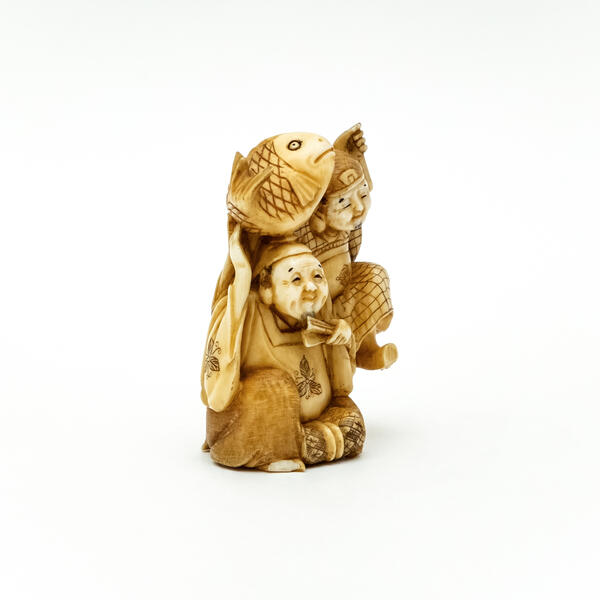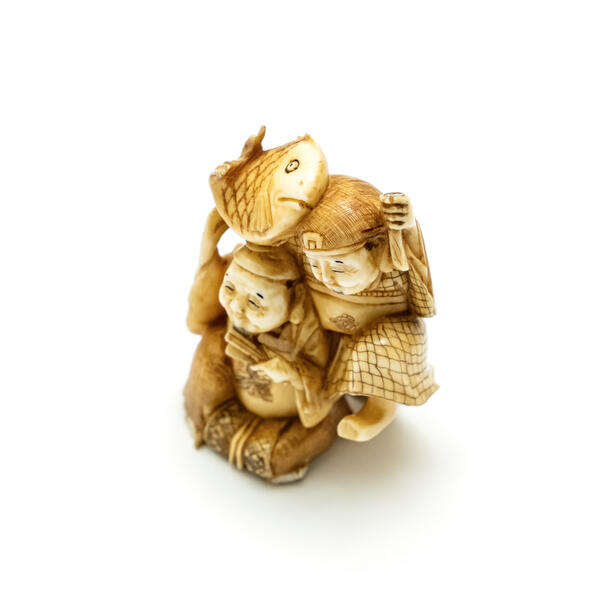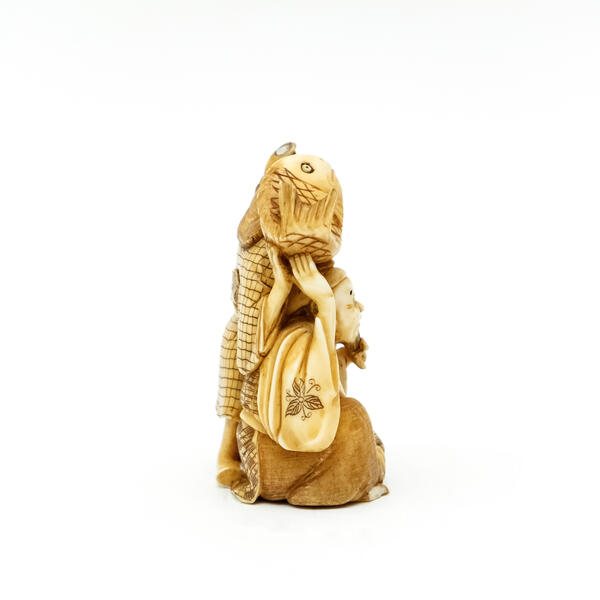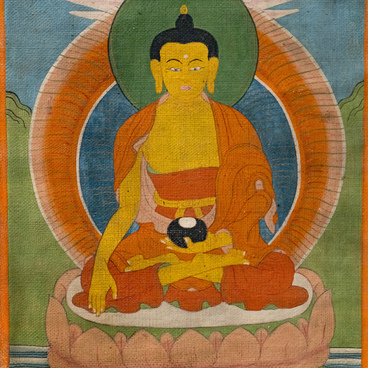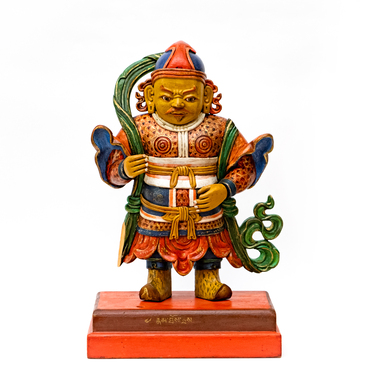The collection of the Sakha Republic National Art Museum includes a small number of Japanese and Chinese ivory sculptures, mainly made in the second half of the 19th century, considered the heyday of this art form. This exhibit is included in the section “Art of the East.”
At first glance, such miniature works fascinate with the proficiency of their execution, the spontaneity of humor and the vivacity in the way the artist conveys the nature of the characters. Unlike netsuke, which played the role of a keychain in a Japanese costume and was used to fasten keys and other necessary trifles on the belts, okimono (literally, “a standing object”) appeared much later and served as decorations of the interior. Okimono were believed to have benevolent properties, since elephant tusks were deemed to have healing properties. Many netsuke and okimono depicted deities who gave various benefits. Among the exhibits of the museum, there is a remarkable example of okimono art — “Ebisu and Daikoku” (two of the seven gods of fortune), made in the spirit of the Edo school.
The small sculpture is exceptionally expressive, the compact plastic form is decorated with an engraved pattern, which gives the composition a single decorative rhythm. The fine engraved decorative pattern effectively stands out on the ivory tinted with beige color: such engraving was widely used by craftsmen in the second half of the 19th century. The depicted gods are endowed with vivid dramatic characters. Their poses and facial expressions border on the grotesque. The small carved figurines are distinguished by the finest elaboration: the artist worked out every minute detail. The craftsman’s keen observation allowed him to capture facial expressions, convey wrinkles and expressiveness of movement and gestures. The gods Ebisu and Daikoku — Happiness and Fortune, going hand in hand — are depicted with unmatched liveliness, each with his own attribute. Ebisu — with a huge sacred fish Tai, Daikoku — with a magic mallet uchide no kozuchi, representing a hammer (with each blow of Daikoku’s magic hammer, love, happiness and health increase in the world).
Ebisu and Daikoku are worshiped by merchants, as
they are the deities of business and trade. They have been revered for over a
thousand years. In fine art, more often in engraving, the seven gods of
happiness are depicted sailing on a treasure ship through the heavens during
the first three days of the new year. The deities usually carry their treasures
with them: scrolls of books of wisdom and life, a magic hammer, an invisibility
cap, a bag of luck, and other magical items.

